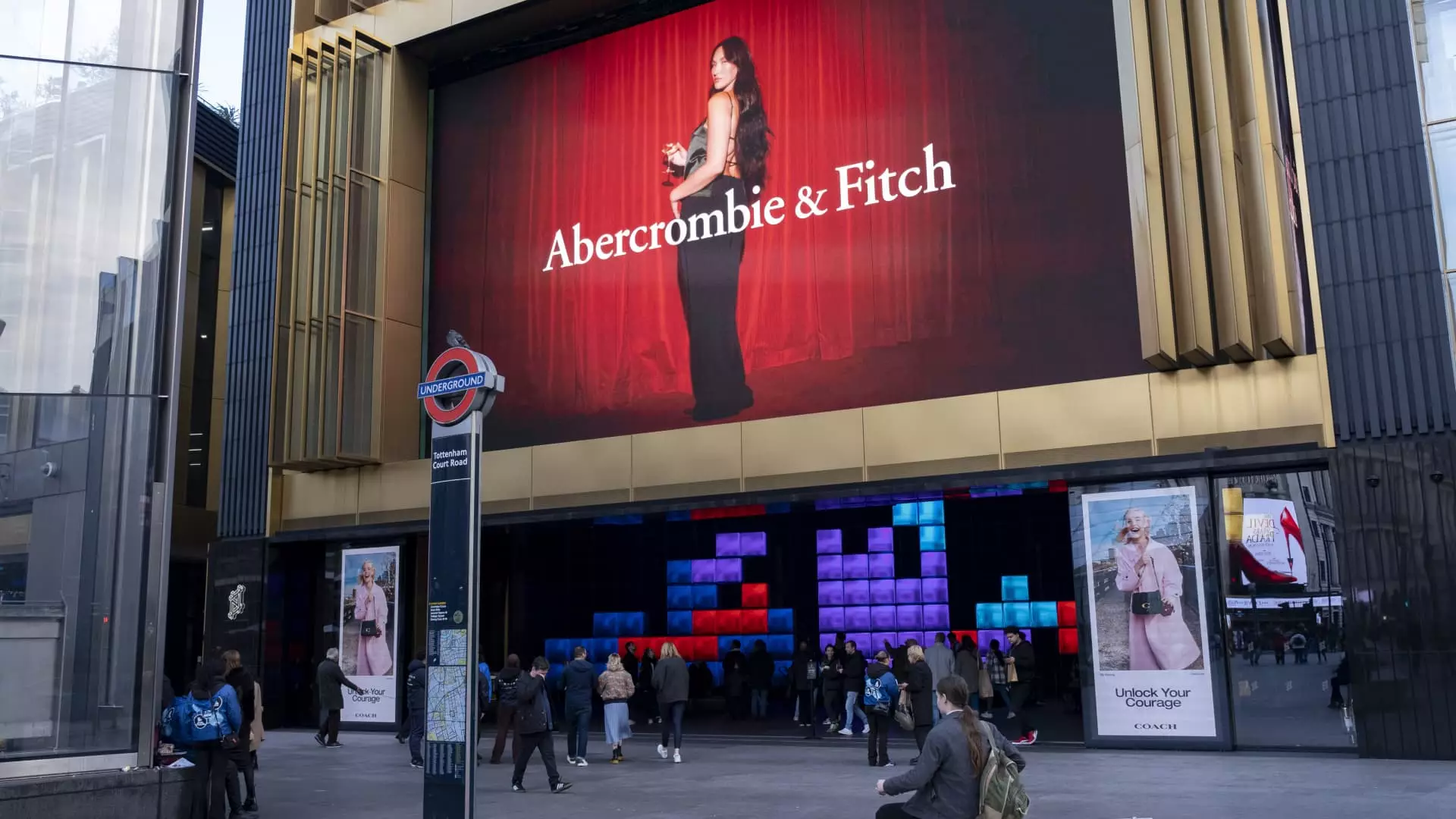In a perplexing turn of events, Abercrombie & Fitch’s stock surged 25% in premarket trading after mixed earnings results surfaced. On the surface, one might assume that the promising figures would overshadow numerous troubling indicators, leading investors to irrational exuberance. However, this spike in stock price feels like a classic case of misplaced faith, considering Abercrombie’s drastic profit outlook slashing and the dire implications presented by tariffs on imported goods.
The company forecasted full-year earnings per share to fall significantly, now expected between $9.50 and $10.50, a sharp decline from its previous predictions. In the cutthroat world of retail, transparency is key; investors should be cautious of what appears to be an overreaction to short-term achievements. When examining the fundamental shifts brewing beneath Abercrombie’s glossy marketing facade, seasoned investors ought to reevaluate the company’s trajectory.
Tariffs: The Corporate Weight Dragging Abercrombie Down
Abercrombie & Fitch stands to lose around $50 million due to tariffs, with significant increases on imports from China and other nations. These tariffs present a serious existential threat, cutting into profit margins and consumer pricing power. Expensive goods can alienate a customer base already reeling from inflation and economic uncertainty. The projected operating margin drop to between 12.5% and 13.5% further illustrates the adverse financial climate that the company faces. It’s troubling to see such an iconic brand floundering at the mercy of international trade policies while trying to maintain operational integrity.
This decline is not merely a cause for concern; it’s a wake-up call. For investors, the takeaway message is that regardless of retail performance metrics, systemic issues like tariffs can undermine even promising sales figures. As a center-right advocate, it’s vital to understand that the current political climate and trade policies will have lasting impacts on American businesses that cannot simply be brushed aside.
The Digital Age: A Brand Identity Crisis
Abercrombie & Fitch’s rich legacy is facing an identity crisis in an e-commerce-dominated retail environment. While the company’s revenue was reported comfortably over expectations, a closer inspection reveals that Abercrombie’s namesake brand projected a disconcerting decline by nearly 4%. Comparatively, its Hollister counterpart achieved a remarkable 22% growth, raising questions about consumer preferences, branding effectiveness, and market share. Is Abercrombie holding onto a nostalgic identity at the expense of evolution?
In today’s marketplace, brands must be agile and adaptive to shifting consumer desires. The youth-centric appeal is gravitating towards digital engagement, community identity, and sustainability—elements that Abercrombie’s classic image struggles to capitalize on. This is a brand in speculative territory, hinging future success on reimagining its narrative while unpacking itself from the entanglement of its past.
Comparisons: Hollister’s Ascendence vs. Abercrombie’s Decline
A compelling juxtaposition emerges when observing the performance of both Abercrombie and its sister brand, Hollister. The stark contrast in growth should raise alarms within Abercrombie’s executive boards as they contemplate their positioning in a crowded market. As Hollister surged with a 22% increase in sales, Abercrombie’s 4% dip signifies a troubling shift in consumer preference. One could argue this decline is more than just seasonal; it could reflect a larger trend—a looming disinterest in Abercrombie’s offerings.
The stark reality is that Abercrombie’s pioneering youth ethos may be losing its resonance among contemporary consumers. While Hollister rides a wave of relevance and adaptability, Abercrombie may need to question whether an overhaul of strategy is essential for revitalization or if a nostalgic brand identity is sustainable in the long-term scheme.
A Call for Reflection: The Future of Abercrombie & Fitch
Given the current trajectory of Abercrombie & Fitch, there is a pressing need for introspection and adaptation. The company stands at a crucial juncture where tangible changes above mere stock fluctuations might be necessary to navigate market challenges posed by tariffs and shifting demographics. A proactive approach in developing innovative marketing strategies and embracing the digital landscape may hold the keys to revitalization.
Investors should remain wary of superficial stock surges while compelling themselves to investigate deeper into profitability fundamentals and long-term sustainability strategies of the company. In this ever-evolving marketplace, Abercrombie & Fitch must recognize that yesterday’s triumphs don’t guarantee future success; hence, the brand stands precariously poised on the edge of both potential and risk.

